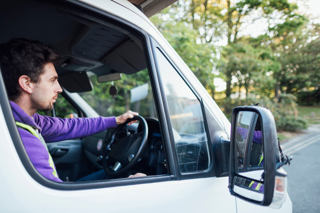This feature originally appeared in the January 2022 edition of Fleet News. Click here to read the article in the digital issue of the magazine.
Whichever way you look at it, the benefits of implementing a robust driver training strategy are clear.
Whether it’s to improve the safety and welfare of staff as well as cutting costs through reducing collisions, achieving savings through greater fuel efficiency, or improving usage of electric vehicles, the right driver training can have wide-reaching impacts.
1 Identify training needs
The first step is to identify what the organisation wants to achieve, whether it is reduced collisions, lower fuel costs, or something else altogether.
For safety, for example, Tony Greenidge, chief executive of IAM Roadsmart, says any training needs should be identified through a detailed risk assessment, assigned to every employee who drives as part of their job.
“This should be made an integral part of every new employee’s induction and be routinely revisited at regular intervals to take into account changes in each driver’s circumstances, such as any additional points on their licence since the last check,” he adds.
“Aggregating the various factors into a risk score can help fleet managers identify drivers with a high overall risk level.
“Each individual driver’s performance in each area of the risk assessment can then be examined to identify specific training needs.”
The use of telematics to monitor driver behaviour is one of the most common methods to record useful data.
A similar process can be used for other areas: for example, fuel usage and mileage can be used to identify which drivers would benefit from eco-driving training.
Greg Ford, general manager at RED Driver Risk Management, reiterates the importance of online training, while also stressing the potential for in-vehicle assessments.
“Unfortunately, we find that many businesses don’t identify training needs until it’s too late – this could be after an event or series of events have occurred such as a run on speeding fines or an increase in repair bills,” says Ford.
“The best approach is to be proactive. This can take a number of forms, the obvious one being in-vehicle driver assessments which can take place in various formats, but are generally conducted on-site on a one-to-one basis with a specialist trainer.”
2 Identify the right training methods
The best training method will invariably depend on a combination of each driver’s individual performance in the risk assessment and the relevance of the training to their working life.
“It’s important to establish the baseline of success along with your training provider so specific and achievable risk targets can be established and met in the short, medium and long terms,” says Jennifer Morris, head of commercial development at DriveTech.
“Businesses should also consider how their drivers best consume information and, using data and information from the previous analysis stage, make an informed decision on what training will be most effective.”
IAM Roadsmart’s Greenidge says low-risk drivers might require only nudge-based online training whereas seriously at-risk drivers may require extended on-road training.
“For a high-mileage driver with a high-risk rating, an in-vehicle training session is generally our recommendation as it provides the driver with a truly hands-on experience, with direct and insightful feedback from a professional fleet trainer,” he says.
“For drivers falling into lower risk categories, or those with very specific requirements, bite-size training interventions such as e-learning modules or webinars may be more appropriate.
“For example, a group of occasional drivers identified as having a moderate risk rating, but also a shared history of speeding endorsements, might benefit most from a group session on speed management.
“This kind of training course can be delivered as a webinar, which is handy for remote workers, and is also far less time-consuming and costly compared with an on-road course.”
Group webinars also represent more of a light-touch approach that may be more appropriate for those who only drive for work occasionally.
3 Implement the driver training plan
Implementations should be straightforward once objectives and training methods have been identified.
“A driver training plan should be focused on attitude, behaviour and competency while being tailored to meet your organisation’s objectives and mitigate specific risks,” says DriveTech’s Morris.
Driver buy-in can sometimes be an issue for any training plan, as some employees are reluctant to take part or do not believe they need to improve.
To overcome this, Ford at Red Driver Risk Management, says there is a need for fleets to quantify their objectives and then ensure that any reporting that takes place is carried out against that process.
“We’ve always maintained that any training should be enjoyable and a benefit to the trainee, seen as a reward rather than a punishment,” he adds.
“Training completed where a trainee is engaged and positive is always more effective – it again comes back to creating a proactive environment and culture in the business and completing training before it’s required.”
It should also be made clear that providing driver training is not only a n important part of fulfilling the requirements of workplace safety legislation, it is also intrinsic to the duty of care obligations every business has for its employees.
IAM Roadsmart’s Greenidge says the first step in implementing a successful driver training plan is to establish ownership.
“What we see in many businesses is that driver risk management sometimes falls to the fleet manager, sometimes to a health and safety manager, sometimes to human resources,” he adds.
“In reality, all have a part to play, but the administration of driver training must be part of a clearly defined remit so that it is not neglected and is implemented consistently.”
Once the strategy has been implemented, fleets must reflect regularly and realistically on the challenges their drivers face – and subsequently evolve their strategy if this becomes necessary.
Morris concludes: “Robust driver safety is an ongoing and evolving process that requires constant care and attention.
“Ultimately, though, a continuous improvement strategy will save lives.”
Case study: Clarke Energy

Clarke Energy has implemented a robust driver training programme following thorough analysis of its driving employees.
The company, which has a fleet of around 200 vans and cars, is a specialist in the engineering, installation and maintenance of engine-based power plants.
It wanted a programme which would allow it to oversee its duty of care compliance, keep drivers safe and minimise collision rates to keep insurance costs down.
“Our parent company, Kohler, has health and safety at its core too, so we implemented the programme not only for the business benefits, but, frankly, because it’s the right thing to do,” says Maria Bate, Clarke Energy deputy purchasing manager.
After appointing training provider TTC, Clarke Energy carried out a root and branch risk audit and subsequently devised a driver training strategy with four key elements:
■ The strategy first ensured leadership buy-in and subsequently announced the safety initiative to all relevant drivers.
■ All drivers were offered the opportunity to undertake online training on hazard awareness, speed recognition and distractions.
■ All drivers had their risk exposure assessed and a risk rating was awarded to all at-work drivers. All 200 drivers were invited to undertake a detailed online assessment covering driver information, history, knowledge and environmental exposure.
■ Training interventions were implemented based on assessment scores as well as ensuring senior and middle managers had a full understanding of their responsibilities.
Following the review, driver training has been introduced for high-risk drivers and workshops arranged for line managers and senior managers to ensure they fully understand their health and safety responsibilities.
Post-collision interview training is also being offered to drivers involved in a crash, while Clarke Energy is also planning to arrange forums on specific driving topics with different groups of drivers.



















Login to comment
Comments
No comments have been made yet.